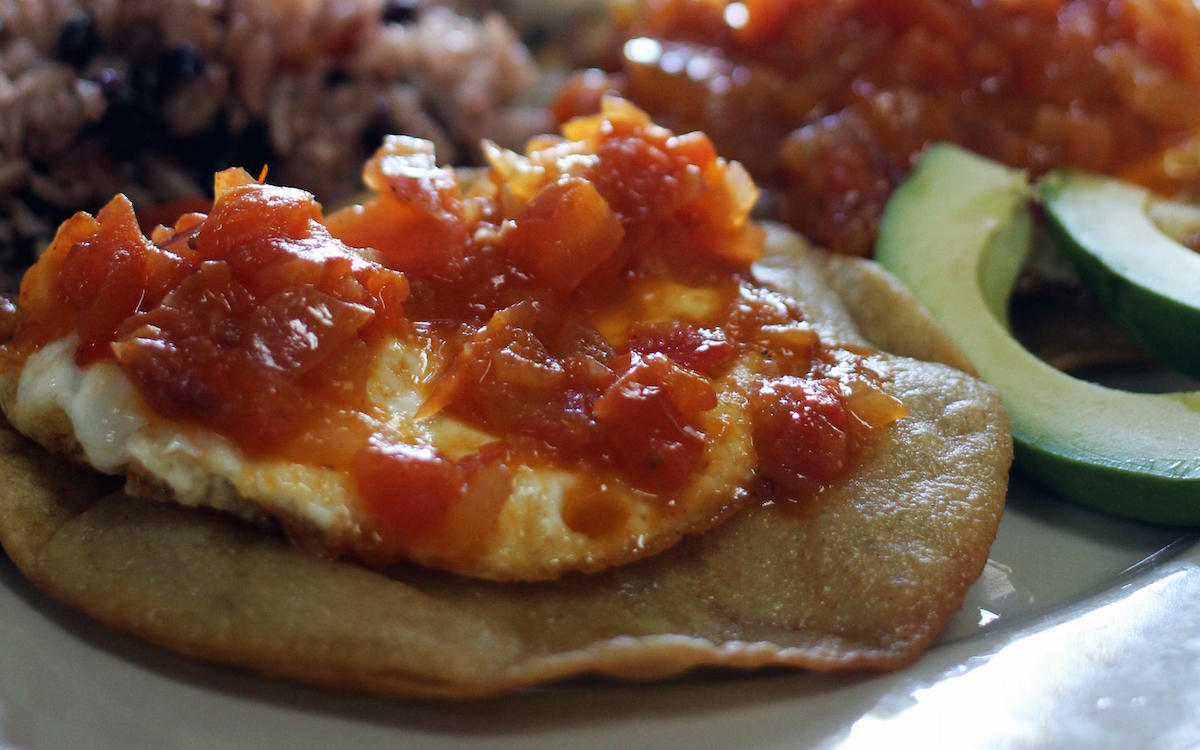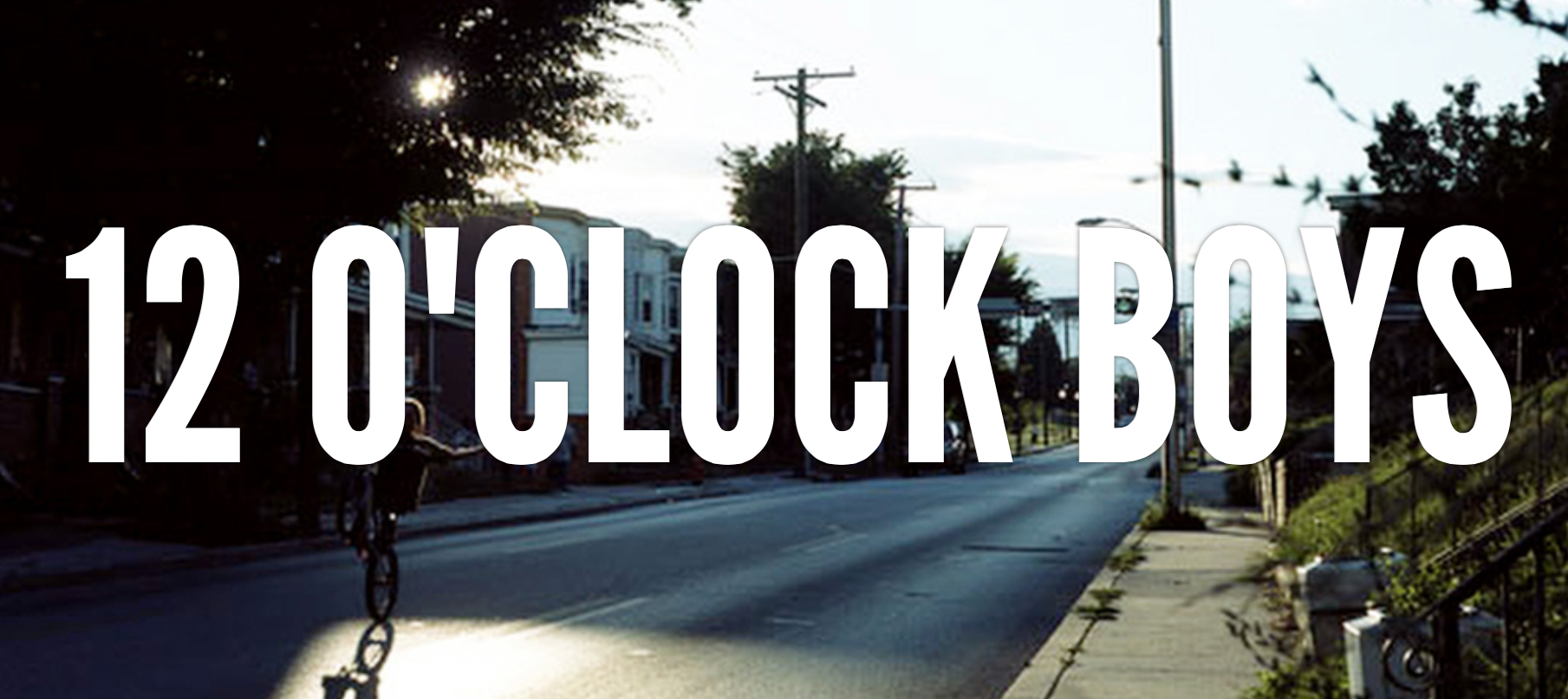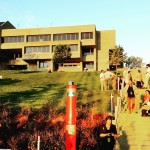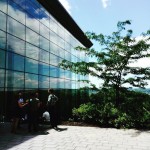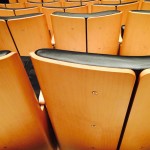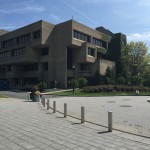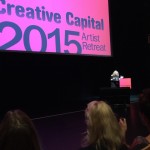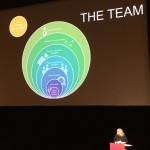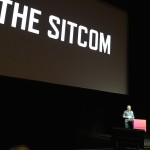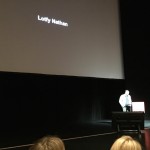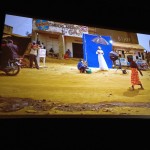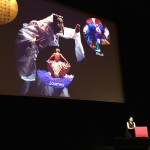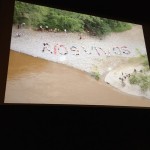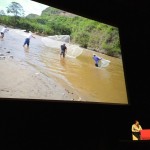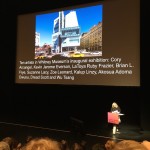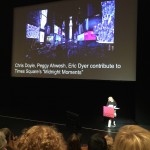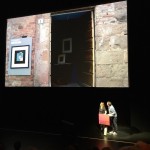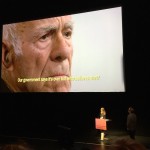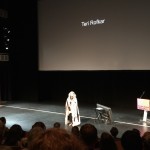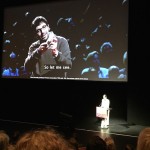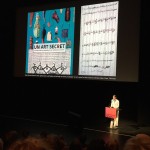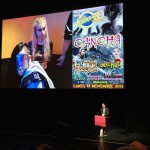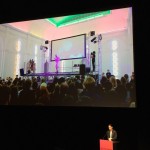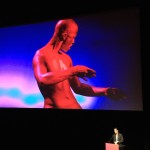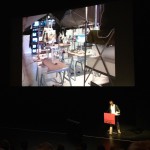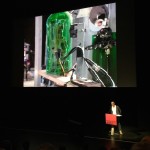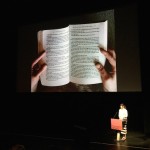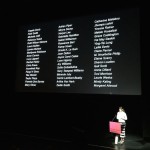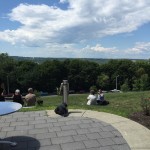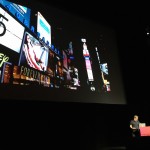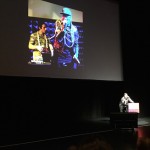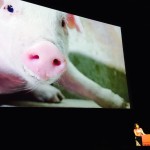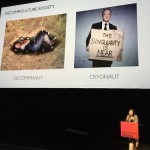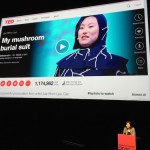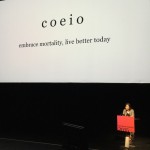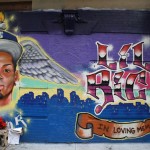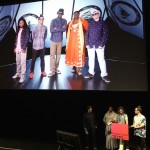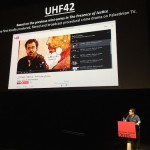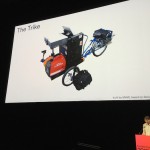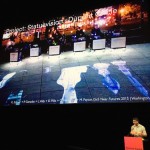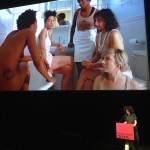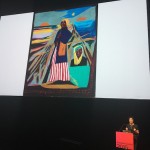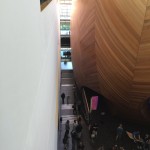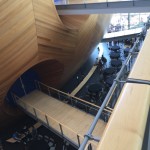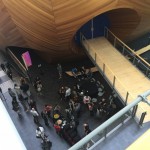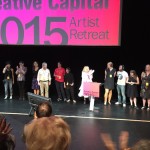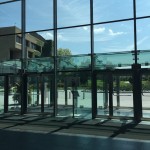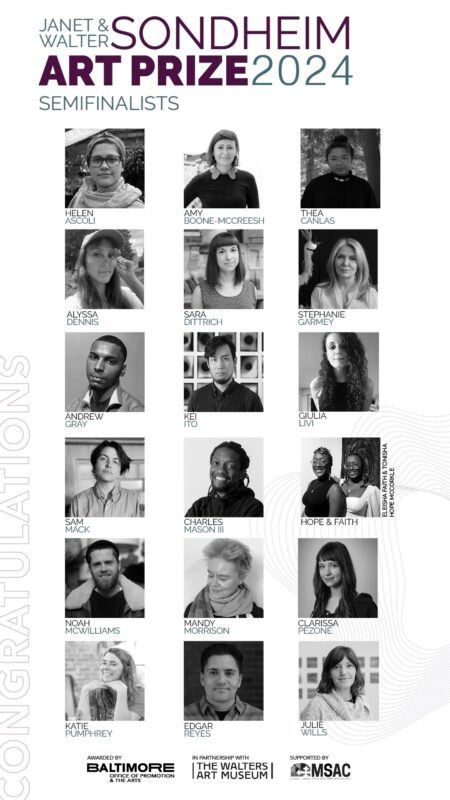What I Learned at the 2015 Creative Capital Retreat
By Cara Ober
Imagine you’ve lived your whole life eating the same food at every meal. You’ve been satisfied and healthy. But then… you take a trip to a faraway place and try the cuisine. And this food is so damned flavorful, so delicious you can’t believe it. Suddenly, your relationship with your entire diet has shifted. You can’t go back to the way things were, but you’re not sure you’re capable of making or understanding this new food.
In this scenario you have two options: you can give up and go back to eating the same boring stuff or you can embrace your newfound knowledge and learn to cook better. You might need some cooking lessons (or lots of Youtube cooking tutorials), to discover new places to buy groceries, and to do more traveling. You may need to find new cooking friends to help teach you. Life will never be the same and this is actually a good thing.
This is the only analogy I can draw after attending the Creative Capital Artist Retreat this past July. An invite-only event, over several days I witnessed about 80 seven-minute artist presentations from recent Creative Capital grantees. The goal of each presentation was to discuss current work being produced based on CC funding, to place it into a cultural or personal career context, and to ask audience members for specific assistance in finishing the projects.
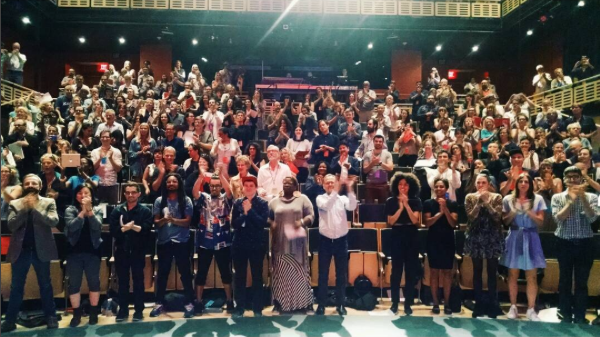
For those unfamiliar with Creative Capital, the NY-based granting institution gives substantial project funding to artists from across the country. Instead of merely offering financial support, Creative Capital uses a venture capitalist model where art and artists are the capital; they offer grantees a network of professional development and support, help them to set attainable goals, and fund them in increments as benchmarks are met.
The annual CC Retreat, held on a bucolic college campus, is an extension of this support model. Not only are grantees given five minutes to present their ideas and accomplishments, CC purposefully invites museum professionals, funders, and experts in a number of different fields to serve as the audience for presentations and one-on-one mentors, so that grantees might benefit from a wide range of support and expertise.

Back to the presentations.
It’s not just that much of the work I witnessed was significantly better than what I typically experience in galleries or museums. It was that the ideas were, somehow, bigger. More expansive. Although many projects were intensely personal, often funny or ironic or esoteric or sad, they also managed to be so broad in idea and scope that new genres and hybrid medias were being invented to accommodate them. Most exciting to me, these projects broke the typical barriers between the art world and the ‘real’ world, encompassing the business sector, the environment, social customs, history, and entertainment models.

Output ranged widely from feature films to comic musicals to interactive performance to photography to literature, and the offerings were as diverse as the practitioners. On the whole, the presenting artists were multi-cultural, multi-generational, multi-gendered, and interdisciplinary in practice.
Despite the diversity presented, there were a number of striking commonalities between artists and their methods for creating and, for me, as an artist and critic, these common denominators have changed the way I think about art.
For those few days, I was overwhelmed, oversaturated, and inspired, but when I returned to Baltimore I felt confused. At this point, I am re-thinking the how and why of art-making, and also reconsidering the trajectory and purpose of an artist’s effort. After marinating in my own experience and reaction for several weeks, trying to make sense of it all, I decided the most useful thing I could do would be to share my observations because, let’s face it, we can all stand to improve our A-game.
When considered and employed the right way, I believe that many of these approaches to art-making can improve your creative output and build momentum in your art career.
*****
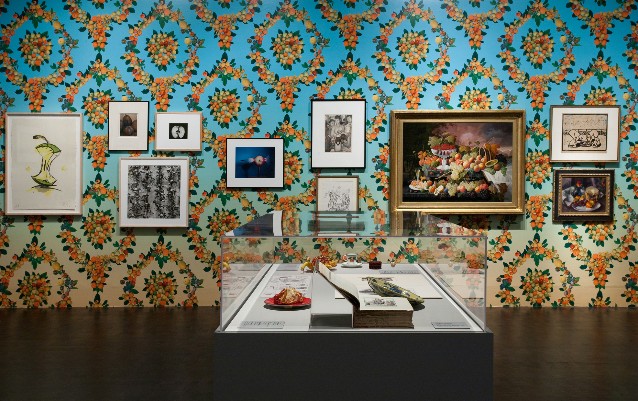
1. Social Impact & Social Justice.
What do you feel most passionate about? How can you make art that attracts an audience to your cause effectively, authentically, and without being preachy or sour? In most, but not all, of the presentations I witnessed, artists tackled significant social issues in their work. Although the artists focused on their creative process and output, there was an overwhelming sense of purpose found in making work that was larger than oneself.
Take Fallen Fruit, a LA-based duo that plants edible forests in urban centers across the country. In addition to their planting and community work, the group has produced a number of museum shows where they curate from museum archives, presenting a selection of local flora and fauna. In this way, they create awareness for the historical (and current) impact of local and indigenous edible plants.
Another presenting artist, Miriam Simun, explored the issue of food and animal ethics. In her current project, “Fair Chance for an Ethical Kill,” the artist spends time with three different methods of garnering food: she hunts rabbits and deer in the Western US, she participates in commercial fishing in the Arctic, and explores human hand-pollinating practices for fruit and vegetables in China where bees have become almost extinct.

Her video documentaries and “Life and Death Dinner” events offer a multi-sensory, non-judgemental way to understand and critique the current food chain for humans. I found it interesting, but not surprising, that Simun holds a bachelors degree from the London School of Economics and a masters degree in Interactive Telecommunications from NYU, rather than a degree in art. This unique background imbued her work with a curious and fresh perspective that managed to ask important questions without fussiness or hangups about the products.
Simun will be coming to Baltimore this fall in conjunction with The Contemporary and presenting a collaborative project: “Ghost Food,” a futuristic food truck which “explores eating in a future of biodiversity loss brought on by climate change.”
2. Social Justice on an International Level.
There was no shortage of ambitious international thinking in the projects presented at CC. The Ghana Think Tank, an artist collective, creates solutions for the problems of developed nations by interviewing inhabitants of developing ones. Filmed documentary style, the answers of the subjects ranged from hilarious to painful to confused. Some eye rolling occurred, but mostly, subjects offered solid critique of the ‘first world’ and sound and constructive suggestions for improvements.

The Ghana Think Tank is currently working on three projects exploring immigration issues: along the US/Mexican border, in Israel, and in the Netherlands. The collective emphasizes a “think tank” method – most often employed by political and business organizations and utilizes interactive technology and film to deliver their message, but the emphasis stays firmly on ideas rooted in international social justice. You can’t help but relate to the individuals in each clip and see yourself in them, no matter what language they are speaking.
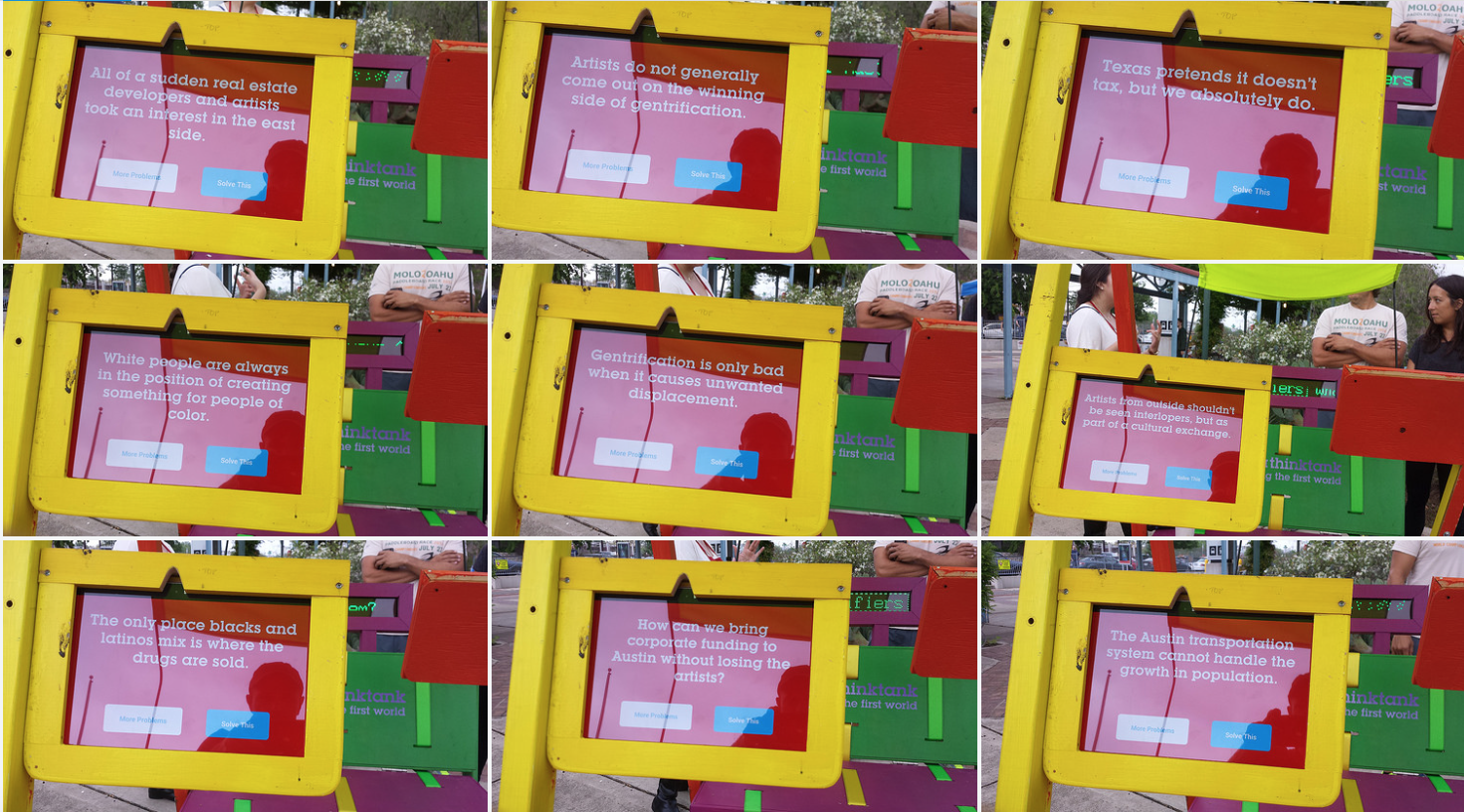
3. Innovative Delivery/ Wow Factor.
Let’s face it – we all have great ideas, but art is cultivated in its delivery. We can rant about social injustice, food deserts, racial inequality, and international American aggression, but without a clever, shocking, or attractive method of conveyance, we’re just another grumpy uncle banging his fist at the dinner table. The one everyone wants to get away from.
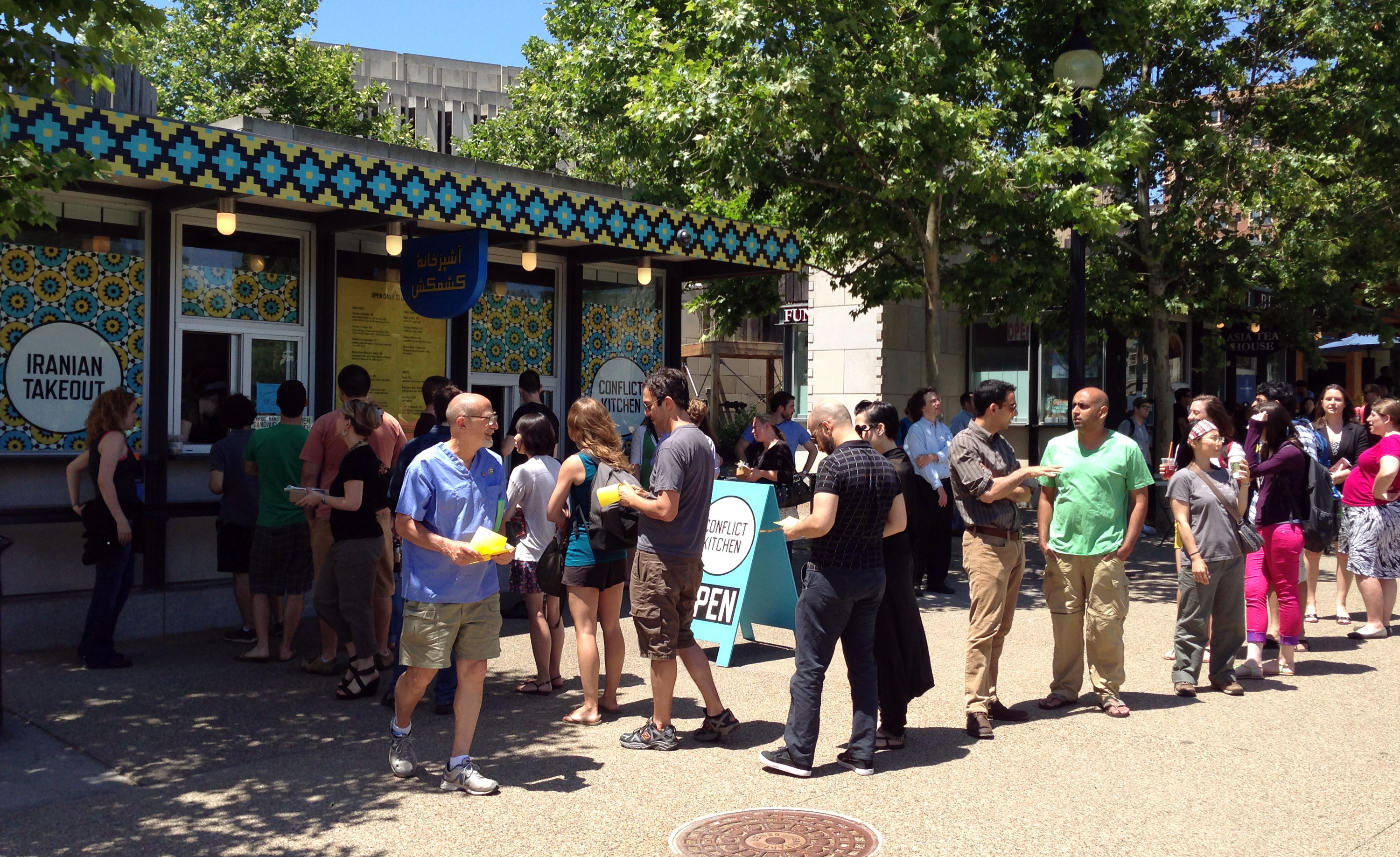
An effective method for addressing international social issues with a completely unique and appealing delivery is Conflict Kitchen, based in Pittsburgh. The popular restaurant serves food from countries which the US in in conflict with. (They are currently serving Cuban food.) In addition to the co-founders’ travel and research into international food and conflict, this venture, designed as a way to creatively distribute sensitive political information, actually makes money! It employs a culinary director, a graphic designer, and an education and outreach director with a staff of almost twenty.
Now CC grantee and co-directing artist John Rubin is working on a new project called The Sitcom, where a TV series will be the method of information delivery. Rubin’s practice is rooted in social justice, but the art is developed through innovative media choices.
4. Potential for Collaboration Outside the Art World.
Many CC grantees asked big ‘What if’ questions that could only be realized by collaborating with unlikely partners from outside the art world. Take Jae Rhim Lee, inventor of the mushroom burial suit. She started out this project by experimenting with mushrooms; she collected human skin, hair, and nail cells and figured out which kinds of mushrooms grew best on them.

From there, she conceived of a simple burial suit that would help the deceased human body to return as many nutrients to the earth as possible with zero pollution. Lee stated that this project was not considered “art” by typical arts funding institutions, but that Creative Capital saw that her unusual idea had the potential to create significant positive change in the world.
Lee did not set out to become an entrepreneur, but the economic and ethical usefulness of her invention has attracted more potential customers than she can handle. At this point, Lee has created a for-profit company to produce the suits and is working with top executives from the sports and fashion industries to transform the funeral industry, which is currently an eco-nightmare whether you choose cremation (carbon emissions) or embalming and burial (formaldehyde poisoning in the local water table).
5. Film and Video.
What’s the most effective art media of our time? Television. We all know this. What do you talk about when you get together with people you barely know? Television. The smartest artists are using this tool to their advantage because they understand that a story or an idea can be told in many different ways. Film, narrative video, sitcoms, and serials can all be an effective way to reach your audience and interest them in your ideas – even if you’re working in an old school or traditional material.
This year’s CC Retreat featured new media and moving image grantees, including Lotfy Nathan’s Baltimore documentary “12 O’Clock Boys” and several Sundance film fest winners (other former Baltimore grantees include Eric Dyer and Matt Porterfield – See? Film.). However, beyond the filmmakers, most presenters – no matter what their media was – included some aspect of video in their presentations.
How many painters, sculptors, or illustrators have professionally edited video on their website? We all should, if our goal is building an audience for our ideas and output.
6. Interdisciplinary Practice.
Rather than self-identifying as a painter, sculptor, or filmmaker, most CC grantees described themselves as artists and storytellers. Although it is essential for an artist to have mastery over their medium, most grantees started with an idea first and then chose their method of delivery specifically for that idea.
One artist, Shawn Peters, created “Documentary on Dying Young,” a bicycle tour of memorial murals for deceased young black men in Brooklyn and a geo-specific phone app to enhance your understanding of each human behind the mural with video documentary and artwork.


Artist collaborative Complex Movements seeks to cultivate cultural awareness and community through an interdisciplinary mix of music, dance, performance, and oral workshops. Their process, which includes travel to different cities for about a month at a time, culminates in an interactive, site-specific installation where communal histories can be navigated by participants, like an immersive video game inside a cinematic pod structure.
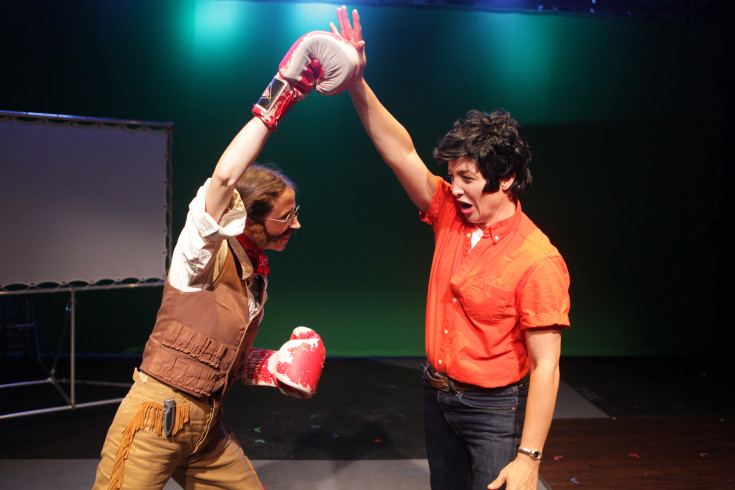
7. Forward Looking + Wow Factor + Interdisciplinary Practice = What is it??
On the whole, the projects I experienced at the CC Retreat were ambitious, unconcerned with art historical precedents, and all about realizing a personal vision in the real world. Although several artists stated that they were seeking gallery representation, this seemed like more of a byproduct of their project rather than the goal. For the most part, the CC grantees who presented this summer cultivated projects that were humanistic, ethical, creative, unusual, innovative, and purposefully designed. Practitioners seemed emotionally engaged with their research and process, and willing to let the process dictate their direction, but also determined that their work be seen, heard, and understood by their intended audience.
The TEAM curates interactive music and dance experiences where different aged groups perform protest songs from each other’s generation, translating them into different genres of music. (Imagine “Blowin’ in the Wind” performed in HipHop or Punk.) Brittany Nelson creates ‘anti-photography’ where her critique of photographic materials, and its subsequent destruction, becomes the work itself. Teri Rofkar creates woven cloaks based in Alaskan native traditions and uses them as “indigenous data storage devices” that critique modern culture and compare it with the making practices of the past. Robert Karimi created a comedy cooking show and “Occupy Lunch” in Baltimore several years ago to explore the traditional diet of Iran in comparison with the US’s diabetes epidemic. Neal Medlyn has recreated himself as the star of a series of 1980’s pop music videos.
I could go on and on and I encourage you to check out the Creative Capital website and look at projects by their grantees. I have barely scratched the surface.

8. Conclusions.
There are no rules in the art world. There is no guarantee of success even when your red hot idea is brilliant and perfectly timed. There are no formulas that work for everyone, just the work we want to do. As artists, we all have to find our own way. However, we’re not making art in a vacuum. When you have an opportunity to sample smart, effective, interesting, and passionate work, it’s going to make an imprint on you. It’s going to make you a better artist.
Whether your goal is to paint a great masterpiece, expose historical injustices, or to envision a world where all animals are treated humanely, we can all benefit from learning new techniques and innovative ways of thinking about our ideas and process. From this exposure and growth, we can begin to think bigger and more expansively, to be more generous with ourselves and our communities. Experiencing the best art of our time is always a good thing.
What is your goal for your work? What is the change you want to see in your world? It’s time to stop stabbing in the dark. It’s time to make a plan and seek out mentors to guide you through the process.
As for me, I am learning video! Slowly and with baby steps, but it’s definitely going to happen. I have things I need to say and video seems like a sexy way to say them. Be patient with me!
Author Cara Ober is Founding Editor at BmoreArt.

